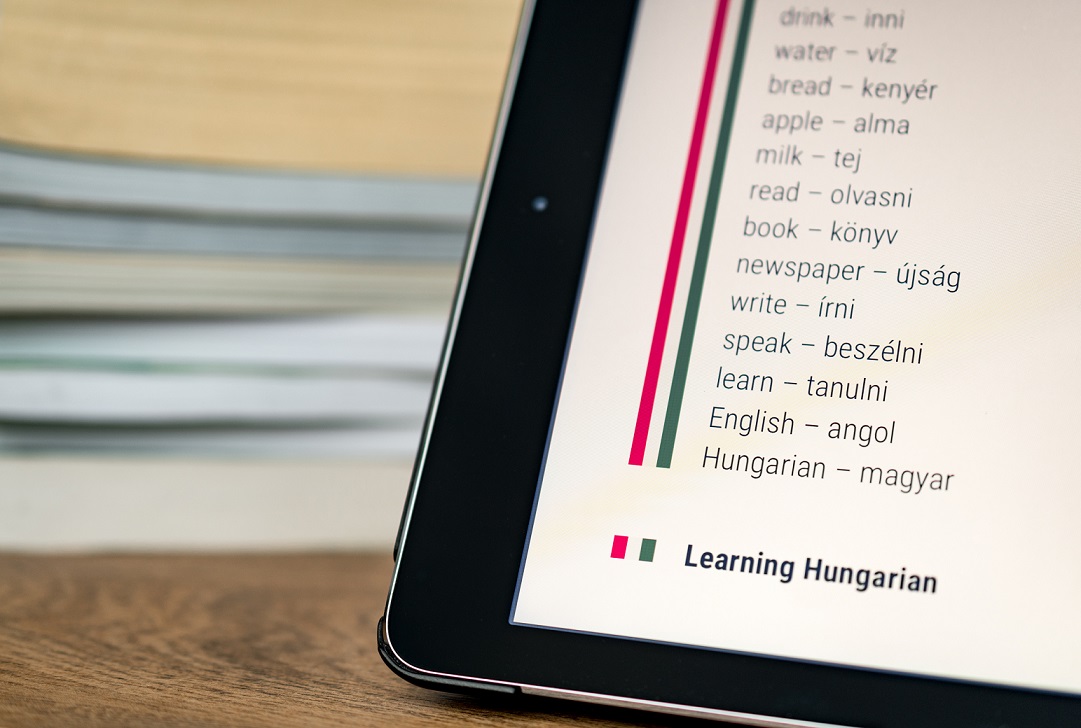The official language of Hungary is complex and unique, it is among the 24 official languages of the European Union. Despite the country’s location in central Europe, its dialect is nothing like those spoken in its neighbouring nations. It is a member of the Finno-Ugric language family the languages of many nations have influenced itations throughout history, none of the neighbouring languages of Central Europe resembles Hungarian. Let’s check what makes the Hungarian language so special!
Anyone learning Hungarian will be keen to tell you that it’s one of the most challenging languages to take up. While opinion varies, everyone agrees it’s up there in the top 10 thanks to its 26 cases and numerous complex rules. In Hungarian Hungary’s language is called “magyar”, which can also be used to refer to the Hungarian people. It’s spoken by about 10 million people in Hungary, but there are major populations of Hungarian speakers across the border as well (cc. 5 million people)
One of the most striking differences between Hungarian and other European languages is that when introducing yourself in Hungary, your given name is always stated after your surname. For example, Sára Kovács would be introduced as Kovács Sára. This can catch some visitors; however, only the given name is used when speaking to or about someone.
Hungarian is written in a Latin alphabet but has 44 letters in total, which might seem a bit excessive compared to the 26 letters in English. However, once you have managed to learn the correct pronunciation for each letter, you are set for life. Hungarian pronunciation mostly reflects writing and vice versa.
There are quite a few composite consonants, meaning that a combination of two or three letters is used to indicate specific sounds. Confused yet? Take, for example, “dzs”, a letter in the Hungarian alphabet pronounced as “j”, or “sz” which equates to “s”.

The five vowels of the English language pale in comparison to Hungarian’s total of 14. As well as the basic “a, e, i, o, u” vowels, the Hungarian language also includes a further 9 variations on these: á, é, í, ó, ö, ő, ú, ü, ű – some of which are not supported by many fonts, a bother to Hungarian graphic designers looking for pretty letters. The pronunciation of each is slightly different and can change the meaning of a word completely.
“Magyar” is an agglutinative language, which means that various grammatical components – such as affixes and stems – can be added to a word to increase its length (and change its meaning). Thanks to this, words of more than 100 letters have been created in the past, although the longer the word, the more it can tend to lose its meaning. Still, nowadays some words can be more than 20 letters long.
Moreover, there is a rule for “vowel harmony”: suffixes have variants with different vowels in them (for example: in the house – “házban”, in the pool – “medencében”), and the variant you use depends on the vowels in the word you are adding the suffix. To increase your troubles, more than one suffix can be added to the same base at the same time to express various grammatical functions in one go. This is a major pain for most Hungarian language learners, as this way each Hungarian word has a tremendous number of forms, instead of just one singular and one plural.
When putting a sentence together in Hungarian, there are a number of options in terms of word order. While the word order is flexible, it’s not totally free – there are still rules about how words need to be arranged. This depends on the emphasis of the sentence.
Let's get some inspiration from Liu Beier who studied the language during his studies in Hungary!
This is a promised land for linguistics because of its many cultural treasures. It was from a book Complete Hungarian written by an Eötvös Loránd graduate that I saw the language for the first time. Well, it was totally different indeed from what I knew by then. Chinese, English, Japanese… I would say it was lovely to hear and logical to learn. Despite the significant difference, the language is relatively easy to learn since the language doesn't have either unlogical properties such as gender or tremendous historical mingling like what happened to English.
It was mere fun to learn this language and the consequences are obviously advantageous: 1) I thus understand a new culture and its specific mindset. It helped me to build many precious relationships with the Hungarian people and I could grasp those education and job opportunities in Hungarian as well.

My advice is first and foremost, to love the language. It is of paramount importance that you enjoy reading, hearing, writing, and speaking the language to keep motivated emotionally and psychologically. So, don’t worry about not being silent and slow in composing sentences. Listen carefully and read with patience to get fully familiar with Hungarian first. Thirdly, learning this agglutinative Hungarian is like a jigsaw-solving game. Get your hands dirty with some experiments on combining different morphological components together. This always gives you a quick kick-start in remembering the structure. Last but not least, find real-life partners to communicate in Hungarian. Local communities are your best classrooms. You can start with online chats with buddies from Tandem.